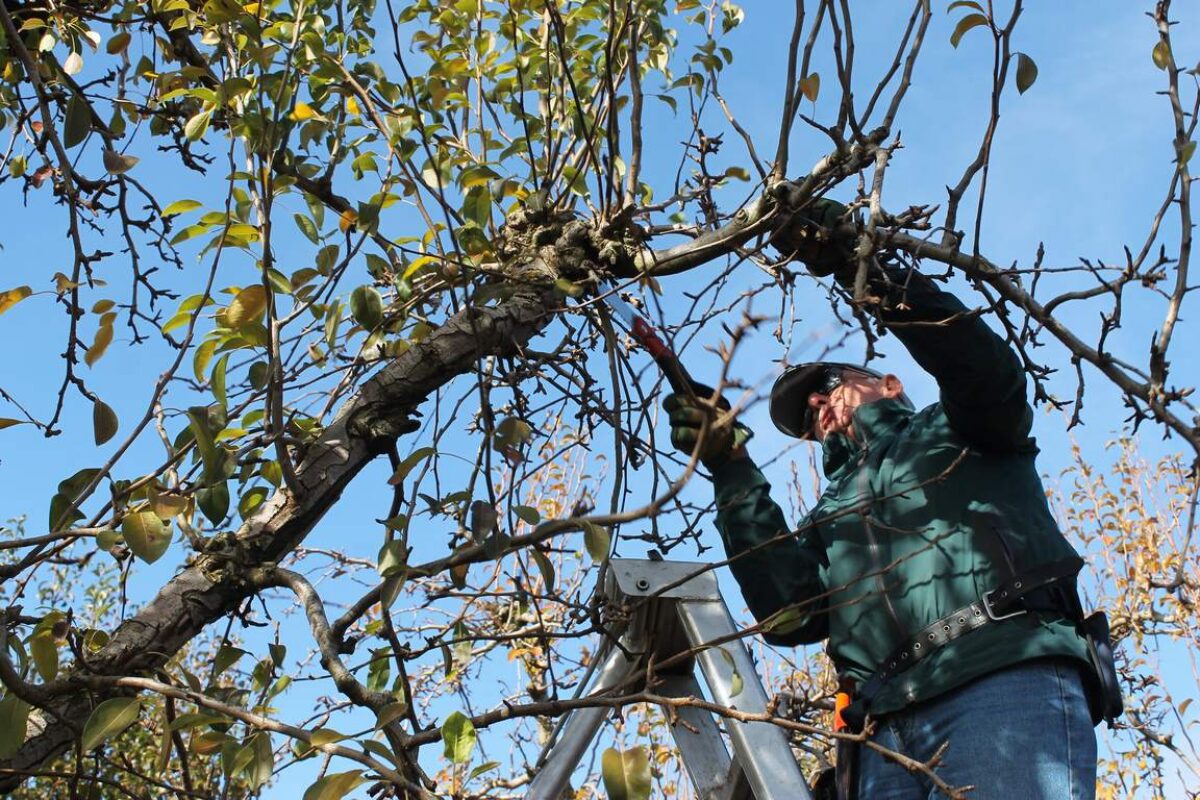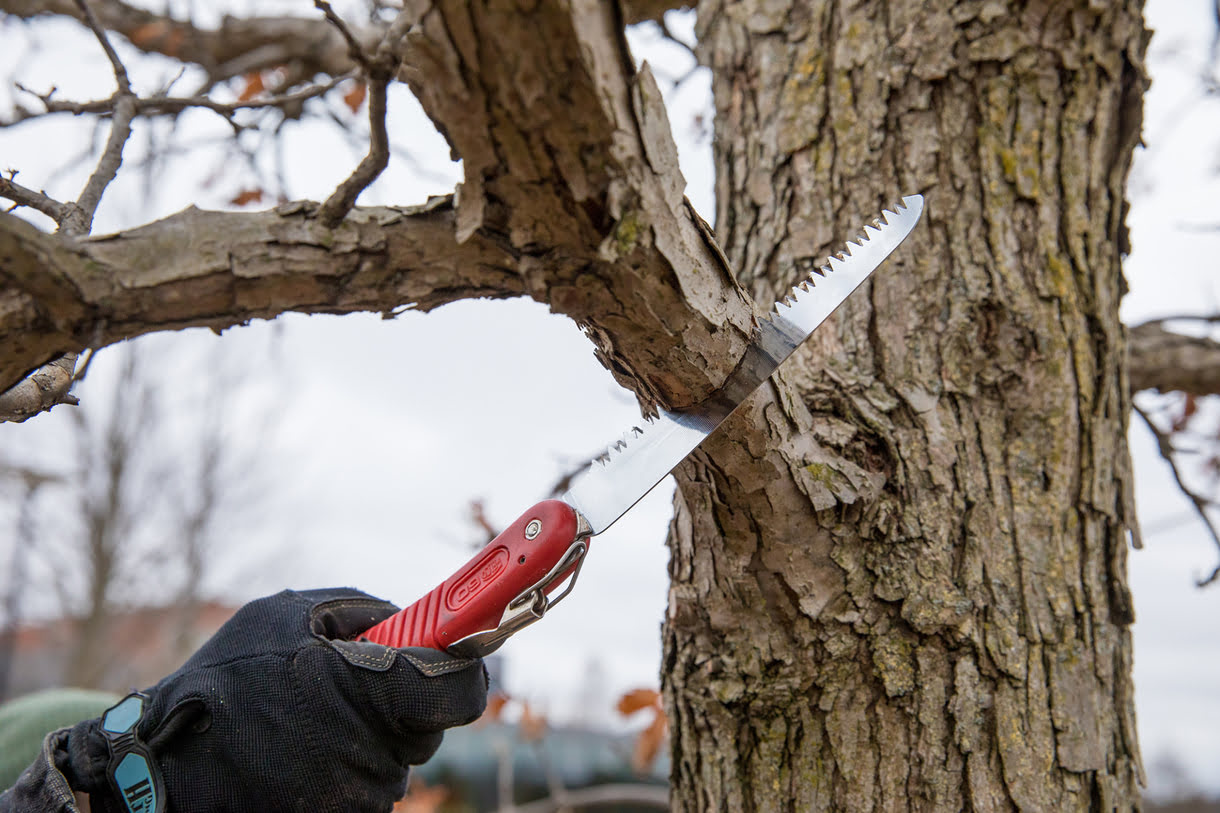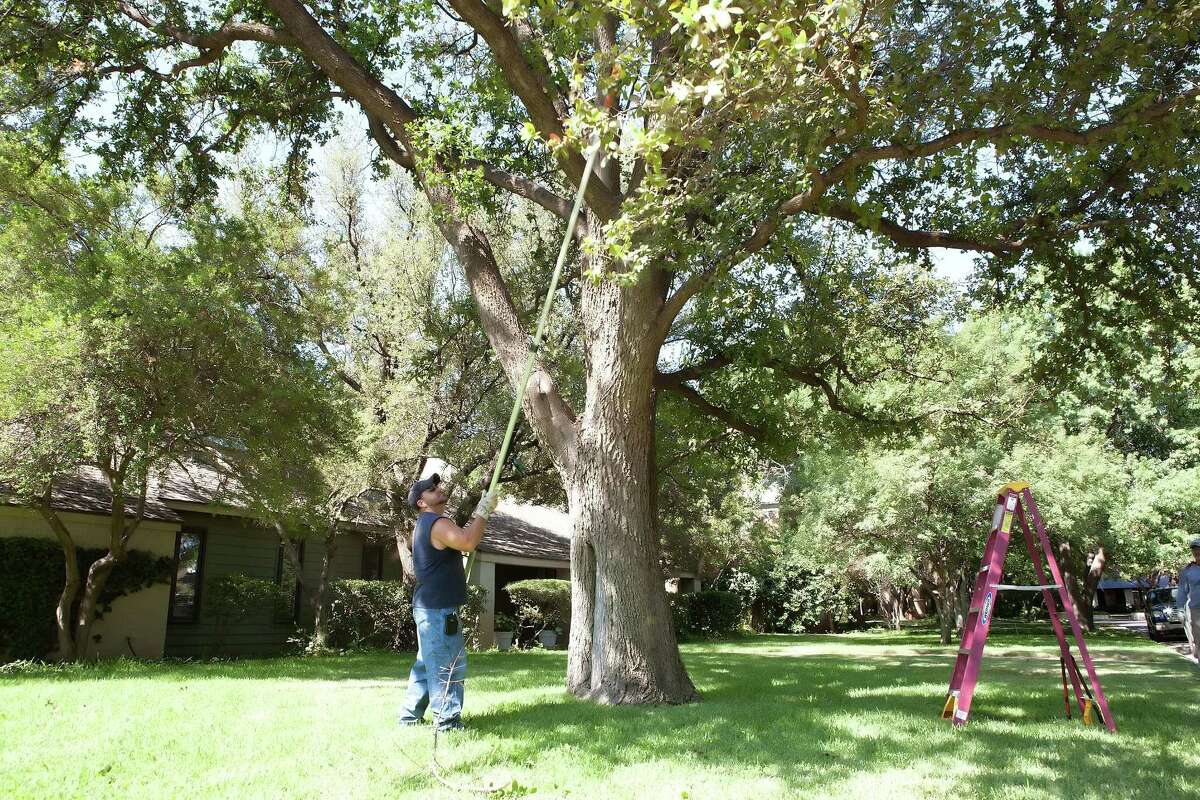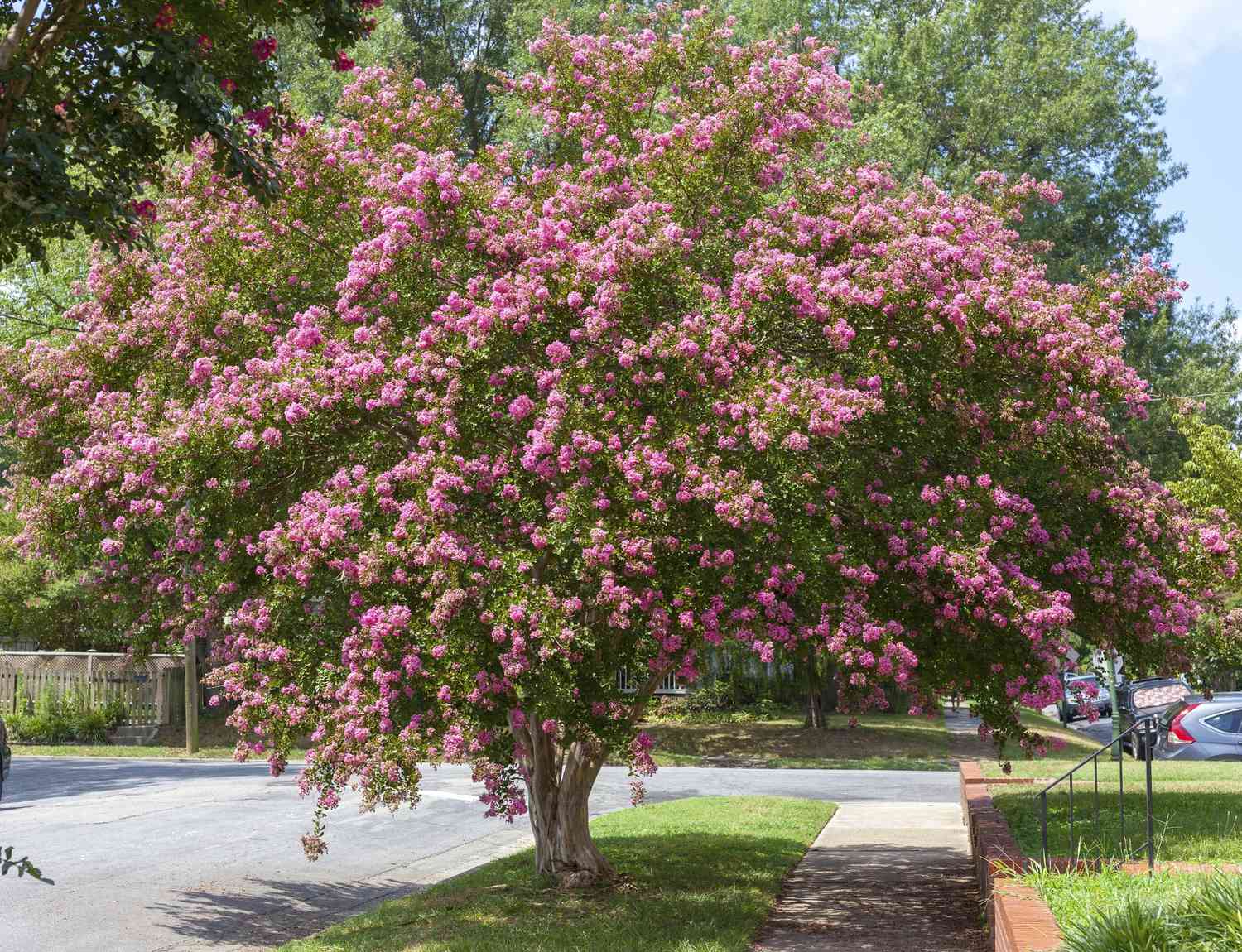Home>Types of Gardening>Ornamental Gardening>When To Prune Mugo Pine Bonsai Tree


Ornamental Gardening
When To Prune Mugo Pine Bonsai Tree
Modified: January 22, 2024
Learn the best times to prune your Mugo Pine Bonsai Tree with our guide on Ornamental Gardening. Ensure healthy growth and maintain its beautiful form.
(Many of the links in this article redirect to a specific reviewed product. Your purchase of these products through affiliate links helps to generate commission for Chicagolandgardening.com, at no extra cost. Learn more)
Table of Contents
Introduction
Welcome to the wonderful world of ornamental gardening! If you have a passion for transforming your outdoor space into a vibrant oasis, then ornamental gardening is the perfect endeavor for you. One facet of this art form that has gained significant popularity is the cultivation of Mugo Pine Bonsai Trees.
Mugo Pine Bonsai Trees, known for their dwarf size and stunning beauty, are a delightful addition to any garden or patio. These miniature trees offer a sense of tranquility and elegance, captivating onlookers with their intricate branching patterns and lush green foliage. However, to truly unlock their full potential, proper pruning techniques must be employed.
In this article, we will explore the art of pruning Mugo Pine Bonsai Trees, discussing the optimal timing, techniques, and maintenance tips to ensure your bonsai tree thrives and flourishes. Whether you are a seasoned gardener or a beginner delving into the world of ornamental gardening, this guide will provide you with the knowledge and tools necessary to cultivate a healthy and visually appealing Mugo Pine Bonsai Tree.
So, grab your gardening shears, put on your gardening gloves, and let’s embark on a journey to discover the secrets of pruning Mugo Pine Bonsai Trees!
Understanding Mugo Pine Bonsai Trees
Mugo Pine Bonsai Trees (Pinus mugo) are a species of pine tree that naturally grow in the mountainous regions of Europe. These evergreen conifers are highly adaptable and have become popular choices for bonsai enthusiasts around the world. Due to their smaller size and unique growth patterns, Mugo Pines are well-suited for the art of bonsai.
One of the defining features of Mugo Pine Bonsai Trees is their dwarfed stature. These trees typically grow to a height of 2 to 4 feet, making them ideal for smaller garden spaces or for those who wish to have a bonsai tree indoors. Despite their small size, Mugo Pines display all the characteristics of their full-sized counterparts, including vibrant green needles, distinctive cones, and an elegant trunk.
Another noteworthy attribute of Mugo Pine Bonsai Trees is their ability to withstand a variety of climates. These hardy trees are cold-tolerant and can survive in temperatures as low as -30 degrees Fahrenheit. They are also heat-tolerant, allowing them to thrive in warmer regions as well. This adaptability makes them an excellent choice for bonsai enthusiasts across different geographic locations.
When it comes to styling Mugo Pine Bonsai Trees, there are several popular techniques used. The most common styles include formal upright (chokkan), informal upright (moyogi), slanting (shakan), and cascade (kengai). Each style has its own unique characteristics and requires specific pruning and training techniques to achieve the desired shape and aesthetics.
It is important to note that Mugo Pines have a moderate growth rate, meaning they will require regular maintenance to preserve their shape and size. Pruning plays a vital role in maintaining the health and appearance of these bonsai trees, which we will explore in more detail in the following sections.
Basic Pruning Principles
Pruning is a fundamental practice in bonsai cultivation, and understanding the basic principles will ensure that you achieve the desired results with your Mugo Pine Bonsai Tree. Here are some key principles to keep in mind:
- Shape and Form: Pruning allows you to shape and control the growth of your Mugo Pine Bonsai Tree. By strategically removing branches, you can create a balanced and harmonious design. Consider the desired style, such as formal upright or cascade, and prune accordingly to maintain the overall shape and form.
- Aesthetic Appeal: Pruning helps enhance the visual appeal of your bonsai tree. Aim to create dynamic branch structures by removing crossing or inward-growing branches. This will create a sense of depth and realism in your tree’s canopy.
- Air and Light Circulation: Proper pruning ensures sufficient air and light circulation throughout the tree. Removing overcrowded branches allows light to penetrate the inner branches, promoting healthy growth and reducing the risk of disease or pests.
- Bonsai Balance: Pruning helps maintain the balance between the tree’s root system and its foliage. By selectively removing branches, you can reduce the overall leaf mass and allocate energy for the development of new growth, resulting in a well-balanced bonsai tree.
- Gradual Process: Pruning should be done gradually and with caution. Avoid removing large sections of the tree at once, as it can weaken the tree and hinder its ability to recover. Instead, opt for selective pruning over time, allowing the tree to adapt and grow healthily.
As you gain experience and become more familiar with the growth patterns of your Mugo Pine Bonsai Tree, you will be able to apply these principles more effectively. Remember, pruning is an ongoing process and should be done with care and consideration for the overall well-being of your tree.
Timing for Pruning Mugo Pine Bonsai Trees
Choosing the right time to prune your Mugo Pine Bonsai Tree is crucial for its health and growth. As an evergreen conifer, Mugo Pines have different growth patterns and requirements compared to deciduous trees. Here are some guidelines to help you determine the appropriate timing for pruning:
- Spring Pruning: Spring is the optimal time for major structural pruning of your Mugo Pine Bonsai Tree. During this time, the tree is entering its active growing season and can quickly recover from the pruning cuts. Spring pruning allows the tree to redirect its energy towards new growth, resulting in a more compact and dense canopy.
- Pinch Pruning: Pinch pruning, which involves removing the tips of young shoots or candles, is typically done in early summer. This technique helps control the development of branches and stimulates back-budding, which leads to a more refined and compact tree structure.
- Minimal Pruning in Fall and Winter: While minimal pruning can be done in fall and winter, it is generally not recommended to perform any major pruning during these seasons. The tree’s growth slows down, and it may be more susceptible to damage and slower recovery. However, you can remove any dead or damaged branches during this time.
It is important to note that the timing for pruning may vary depending on your specific climate and the condition of your Mugo Pine Bonsai Tree. Always observe the tree closely and assess its overall health before pruning. Additionally, avoid pruning during extremely hot or dry periods, as the tree may be more stressed and less able to recover.
Remember, a well-timed pruning regimen will promote healthy growth, maintain the desired shape, and enhance the overall aesthetics of your Mugo Pine Bonsai Tree. By following these timing guidelines and being attentive to the needs of your tree, you will be able to achieve the best results with your pruning efforts.
Signs That Indicate the Need for Pruning
Knowing when to prune your Mugo Pine Bonsai Tree is as important as understanding the techniques involved. Observing the following signs will help you determine when it’s time to pick up your pruning shears:
- Overgrown Branches: If you notice excessive growth or branches that extend beyond the desired shape and form of the tree, it’s a clear indication that pruning is needed. Overgrown branches can disrupt the balance of the bonsai and affect its overall aesthetic appeal.
- Crossing or Rubbing Branches: Crossing or rubbing branches can cause damage to the tree and hinder its growth. These branches can create wounds and abrasions that may lead to infections or pests. Pruning them will prevent further damage and maintain a healthy tree structure.
- Weak, Diseased, or Damaged Branches: Any branches that appear weak, diseased, or damaged should be pruned immediately. These branches not only detract from the tree’s beauty but can also impact its overall health. Removing them will allow the tree to redirect its energy towards healthy growth.
- Excessive Density: If the foliage of your Mugo Pine Bonsai Tree becomes overly dense, it can impede air circulation and prevent light from reaching the inner branches. This can lead to poor growth and increase the risk of fungal diseases. Pruning will thin out the foliage, promoting better airflow and light penetration.
- Unbalanced Appearance: An unbalanced appearance, where certain sections of the bonsai tree have more foliage than others, is a sign that pruning is needed. By selectively removing branches, you can achieve a more symmetrical and visually appealing balance.
Regularly inspect your Mugo Pine Bonsai Tree for these signs, especially during the growing season when the tree is actively developing. This will allow you to intervene at the right time and maintain a healthy and well-maintained bonsai tree.
Remember, pruning is not only about aesthetics but also about the overall health and vitality of your tree. By staying attentive to these signs and acting accordingly, you will ensure the longevity and beauty of your Mugo Pine Bonsai Tree.
How to Prune a Mugo Pine Bonsai Tree
Pruning a Mugo Pine Bonsai Tree requires precision and care to achieve the desired shape and maintain its health. Here is a step-by-step guide on how to properly prune your bonsai tree:
- Assess the Tree: Take a close look at your Mugo Pine Bonsai Tree and identify the branches that need pruning. Look for any crossing branches, weak or diseased branches, or areas of excessive density. Determine the overall shape and form you want to maintain or achieve.
- Start with Minor Pruning: Begin with minor pruning actions such as pinching or finger pruning. Pinching involves removing the tips of new shoots or candles with your fingers. This helps stimulate back-budding and controls the growth of the branches.
- Use Proper Pruning Tools: For more substantial pruning, use specialized bonsai pruning shears or concave cutters. These tools ensure clean cuts and minimize damage to the tree. Sterilize the tools before use to prevent the spread of diseases.
- Make Strategic Cuts: When making cuts, follow the natural taper of the branch and make clean and angled cuts just above a bud or node. This will promote new growth and prevent stubs from protruding. Remove branches at their base if necessary, but be mindful of the tree’s overall structure.
- Thin Out Overcrowded Areas: To improve air circulation and light penetration, selectively remove excess branches and foliage. Start with the innermost branches and work your way outwards. Space out the branches evenly to maintain a balanced appearance.
- Promote Branch Ramification: As your Mugo Pine Bonsai Tree matures, encourage branch ramification by pruning back the branches. This will promote the growth of secondary and tertiary branches, giving the tree a fuller and more refined appearance.
- Step Back and Evaluate: After each round of pruning, step back and evaluate the tree’s overall appearance. Make any necessary adjustments or further pruning to achieve the desired shape and balance.
- Monitor and Maintain: Regularly monitor your Mugo Pine Bonsai Tree for new growth and potential issues. Prune as needed to maintain the desired shape and address any signs of disease or damage that may arise.
Remember, pruning is a gradual process that should be done with caution and consideration for the tree’s health. Take your time, observe the tree closely, and allow it to recover and adjust between pruning sessions.
With practice and experience, you will develop your pruning skills and gain a deeper understanding of the unique growth patterns of your Mugo Pine Bonsai Tree. Enjoy the journey of shaping and refining your bonsai tree into a living work of art.
Precautions and Maintenance Tips
When pruning a Mugo Pine Bonsai Tree, it’s important to take certain precautions and follow maintenance tips to ensure the health and vitality of your tree. Here are some guidelines to keep in mind:
- Protective Gear: Wear gloves and eye protection while pruning to safeguard yourself from any potential injuries. Some species of pine trees may have sharp needles, and debris can scatter during the pruning process, so it’s important to take necessary precautions.
- Proper Pruning Technique: Use the correct pruning tools and techniques to make clean and precise cuts. Avoid jagged cuts or leaving stubs, as they increase the risk of disease and hinder the tree’s ability to heal properly. Prune just above a bud or node to promote new growth.
- Sterilize Tools: Before using your pruning tools, sterilize them to minimize the spread of diseases and pests. Wipe the tools with a disinfectant or rubbing alcohol and let them dry before making any cuts. This helps prevent contamination and ensures the health of your bonsai tree.
- Monitor for Signs of Stress: Keep a close eye on your Mugo Pine Bonsai Tree after pruning for any signs of stress or disease. Look for wilting leaves, discoloration, or drying branches. If you notice any issues, take prompt action to address them and prevent further damage.
- Watering and Fertilizing: Proper watering and fertilizing are essential for the health of your bonsai tree. After pruning, adjust your watering routine accordingly, ensuring that the tree receives adequate moisture without overwatering. Use a balanced fertilizer to provide essential nutrients for healthy growth.
- Regular Maintenance: Pruning is an ongoing process, and regular maintenance is necessary to keep your Mugo Pine Bonsai Tree in optimal condition. Monitor the tree’s growth, prune as needed, and stay attentive to signs of disease, pests, or nutrient deficiencies.
- Keep Learning: Ornamental gardening, including bonsai cultivation, is an art that requires continuous learning and experimentation. Stay curious, read books and articles, join bonsai clubs, and seek guidance from experienced growers to deepen your understanding and refine your skills.
By following these precautions and maintenance tips, you can ensure the long-term health and beauty of your Mugo Pine Bonsai Tree. Remember that each tree is unique, and it may take time and patience to achieve the desired shape and form. Enjoy the process and embrace the artistry of bonsai gardening!







